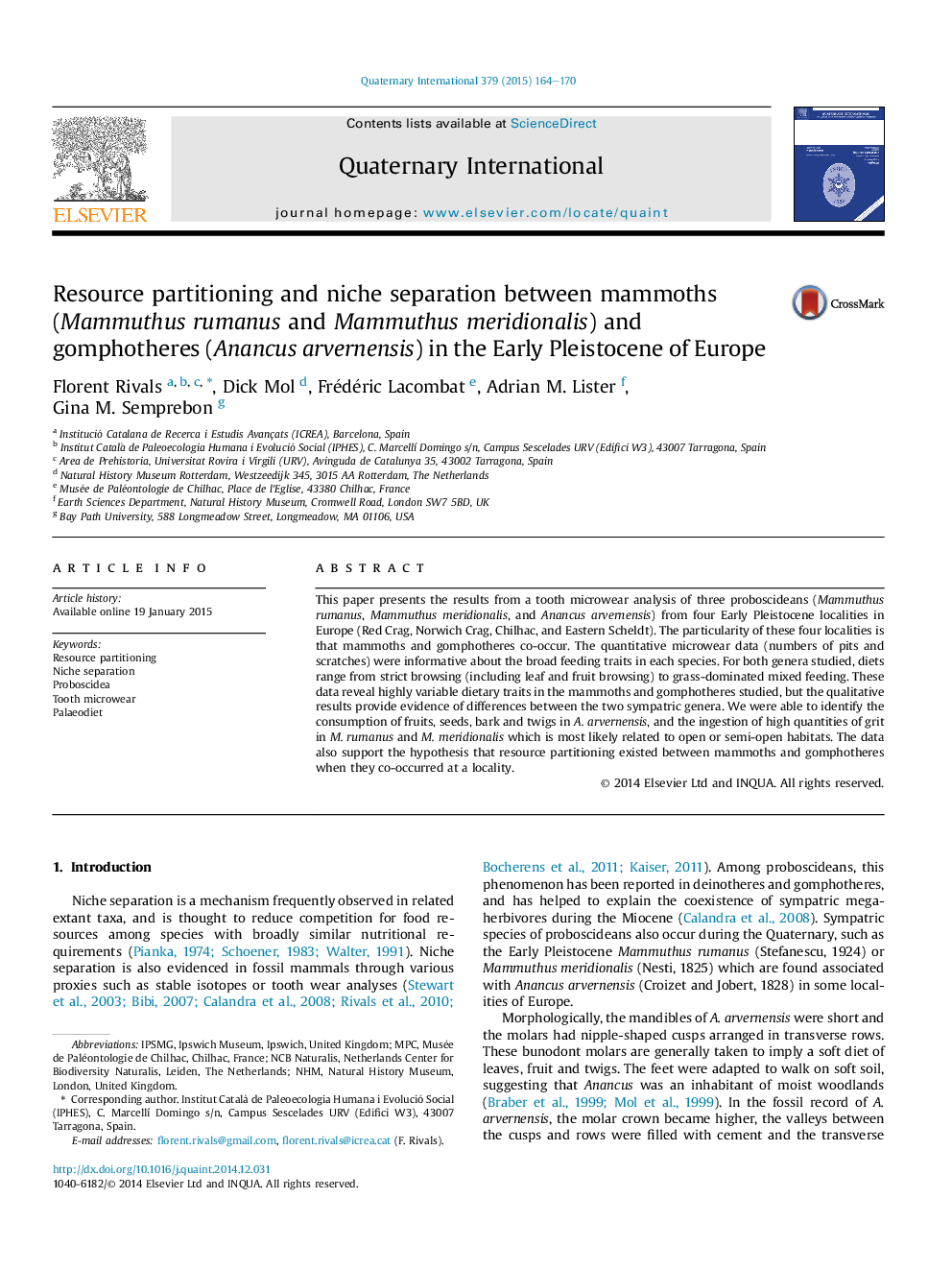| Article ID | Journal | Published Year | Pages | File Type |
|---|---|---|---|---|
| 1040659 | Quaternary International | 2015 | 7 Pages |
This paper presents the results from a tooth microwear analysis of three proboscideans (Mammuthus rumanus, Mammuthus meridionalis, and Anancus arvernensis) from four Early Pleistocene localities in Europe (Red Crag, Norwich Crag, Chilhac, and Eastern Scheldt). The particularity of these four localities is that mammoths and gomphotheres co-occur. The quantitative microwear data (numbers of pits and scratches) were informative about the broad feeding traits in each species. For both genera studied, diets range from strict browsing (including leaf and fruit browsing) to grass-dominated mixed feeding. These data reveal highly variable dietary traits in the mammoths and gomphotheres studied, but the qualitative results provide evidence of differences between the two sympatric genera. We were able to identify the consumption of fruits, seeds, bark and twigs in A. arvernensis, and the ingestion of high quantities of grit in M. rumanus and M. meridionalis which is most likely related to open or semi-open habitats. The data also support the hypothesis that resource partitioning existed between mammoths and gomphotheres when they co-occurred at a locality.
